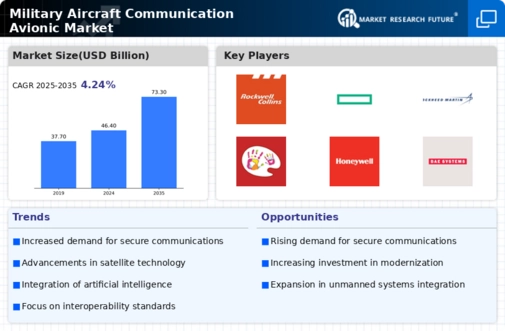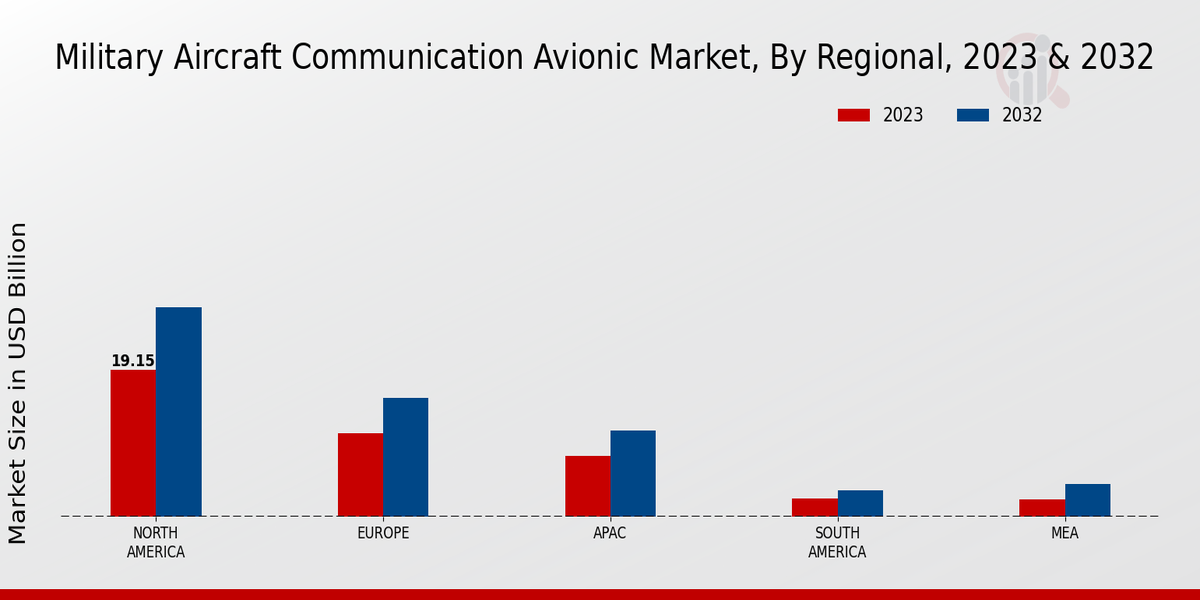Market Growth Projections
The Global Military Aircraft Communication Avionic Market Industry is projected to experience substantial growth over the next decade. With a market value estimated at 46.4 USD Billion in 2024, the industry is expected to expand to 73.3 USD Billion by 2035. This growth is driven by various factors, including technological advancements, increasing defense budgets, and the rising demand for secure communication systems. The compound annual growth rate of 4.24% from 2025 to 2035 indicates a robust market environment, reflecting the ongoing investments in military communication technologies. This upward trajectory suggests a dynamic and evolving landscape for military communication avionics.
Increasing Defense Budgets
The Global Military Aircraft Communication Avionic Market Industry is bolstered by rising defense budgets across various nations. Countries are prioritizing modernization and upgrading their military capabilities, which includes enhancing communication avionics. For example, the United States and NATO member countries have committed to increasing their defense spending, leading to substantial investments in advanced communication systems. This trend is expected to drive market growth, with a compound annual growth rate of 4.24% projected from 2025 to 2035. As nations seek to maintain strategic advantages, the demand for sophisticated communication avionic systems is likely to escalate.
Growing Demand for Secure Communication
In the context of the Global Military Aircraft Communication Avionic Market Industry, the necessity for secure communication channels is paramount. With the increasing threat of cyber warfare and electronic eavesdropping, military organizations are investing heavily in secure communication technologies. This includes the development of encrypted communication systems that ensure the confidentiality and integrity of sensitive information. As military operations become more complex and interconnected, the demand for robust communication avionic solutions is expected to rise. This trend is likely to contribute to the market's growth trajectory, aligning with the projected increase in market value to 73.3 USD Billion by 2035.
Emerging Markets and Global Collaborations
Emerging markets are playing a crucial role in the Global Military Aircraft Communication Avionic Market Industry. Countries in Asia-Pacific and the Middle East are expanding their military capabilities, leading to increased investments in communication avionic systems. Furthermore, global collaborations between defense contractors and governments are fostering innovation and technology transfer, enhancing the overall market landscape. These partnerships often result in the development of tailored communication solutions that meet specific regional needs. As these markets continue to evolve, they are expected to contribute significantly to the projected growth of the industry, aligning with the anticipated CAGR of 4.24% from 2025 to 2035.
Integration of Unmanned Aerial Vehicles (UAVs)
The integration of unmanned aerial vehicles (UAVs) into military operations significantly influences the Global Military Aircraft Communication Avionic Market Industry. UAVs require advanced communication systems to ensure effective control and data transmission. As military forces increasingly deploy UAVs for reconnaissance, surveillance, and combat missions, the demand for sophisticated communication avionic systems is expected to surge. This integration not only enhances operational efficiency but also necessitates the development of new communication protocols and technologies. Consequently, the market is poised for growth, with projections indicating a market value of 46.4 USD Billion in 2024, driven by this trend.
Technological Advancements in Communication Systems
The Global Military Aircraft Communication Avionic Market Industry is experiencing rapid technological advancements, particularly in secure communication systems. Innovations such as software-defined radios and advanced encryption techniques enhance the reliability and security of military communications. For instance, the integration of artificial intelligence in communication systems allows for real-time data analysis and decision-making, which is crucial for mission success. As military forces worldwide increasingly adopt these technologies, the market is projected to grow significantly, reaching an estimated value of 46.4 USD Billion in 2024 and potentially expanding to 73.3 USD Billion by 2035.






















